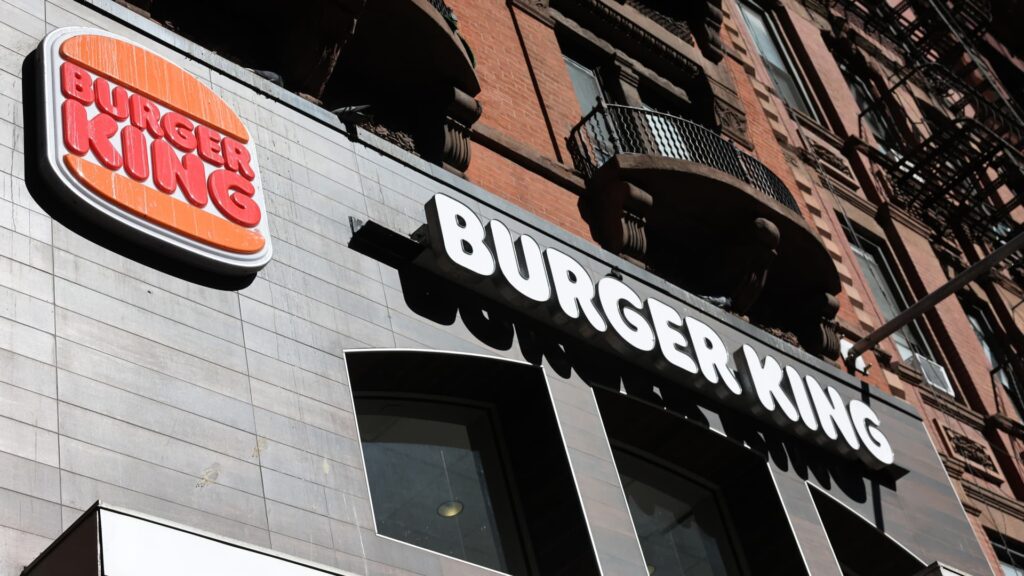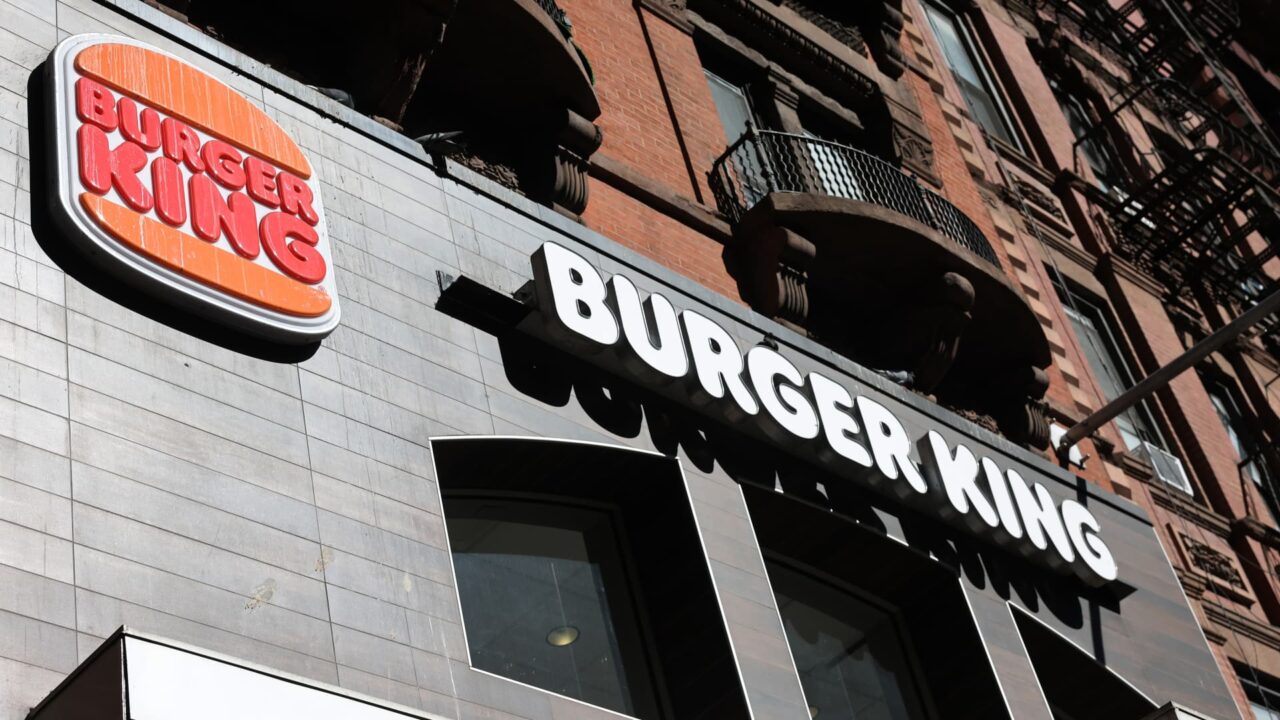
Restaurant Brands International (QSR) Q1 2025 earnings
Restaurant Brands International Q1 2025 Earnings: Missed Expectations but Recovery Signs Emerging
Table of Contents
Restaurant Brands International, parent company of Burger King, Tim Hortons, and Popeyes, saw its stock rise despite missing Q1 2025 earnings expectations.
Restaurant Brands International (QSR) released its Q1 2025 earnings report on Thursday, revealing quarterly performance that fell short of Wall Street expectations. The fast-food giant, which owns Burger King, Tim Hortons, Popeyes, and Firehouse Subs, reported declining same-store sales across its three largest brands, yet its stock price rose more than 1% in morning trading as investors responded to management’s confident outlook for the remainder of the year.
“As we come into [the second quarter], that momentum has improved meaningfully, so we’re seeing some better absolute results as we get into the second quarter that give us confidence in how we’re going to navigate the rest of the year,” CEO Josh Kobza told CNBC, suggesting that the Restaurant Brands International Q1 2025 earnings results may represent a temporary setback rather than a long-term trend.
Key Financial Overview of Restaurant Brands International Q1 2025 Earnings
The QSR earnings report revealed several key metrics that highlight the company’s financial performance for the first quarter of 2025:
Adjusted EPS
Revenue
Net Income
Same-Store Sales
Restaurant Brands International’s net income attributable to shareholders declined significantly to $159 million ($0.49 per share) from $230 million ($0.72 per share) in the same quarter last year. After adjusting for transaction costs related to its acquisition of Burger King China and other one-time items, the company reported earnings of $0.75 per share, below the $0.78 expected by analysts surveyed by LSEG.
Despite the earnings miss, Restaurant Brands International’s Q1 2025 earnings report showed total revenue grew impressively by 21% to $2.11 billion, primarily driven by higher revenue contributions from Popeyes and Firehouse Subs. However, this still fell short of analyst expectations of $2.13 billion for the quarter.
The company’s overall same-store sales growth was minimal at 0.1%, though management noted that excluding the impact of last year’s leap day, same-store sales would have increased by approximately 1%. CEO Josh Kobza acknowledged the challenging quarter, stating, “We anticipated that Q1 would be our softest quarter of the year, and believe that some of the macro noise may have driven further softness.”
Brand-by-Brand Performance Analysis
The Restaurant Brands International Q1 2025 earnings revealed varying performance across its portfolio of restaurant chains, with all three major brands reporting same-store sales declines:
| Brand | Same-Store Sales | Analyst Expectations | Previous Year Performance | Key Insights |
|---|---|---|---|---|
| Tim Hortons | -0.1% | +1.4% | +6.9% (Q1 2024) | Generates over 40% of QSR’s quarterly revenue; showing improved momentum in Q2 |
| Burger King | -1.3% | -0.9% | N/A | U.S. business down 1.1%; still outperforming McDonald’s (-3.6% U.S. same-store sales) |
| Popeyes | -4.0% | -1.8% | +5.7% (Q1 2024) | Largest decline; impacted by tough comparisons to 2024’s Super Bowl advertising |
| International | +2.6% | N/A | N/A | Outperformed domestic operations across all brands |
Tim Hortons Performance
Tim Hortons, which accounts for more than 40% of Restaurant Brands International’s total quarterly revenue, reported a slight same-store sales decline of 0.1%, significantly underperforming against StreetAccount estimates of 1.4% growth. This result represents a substantial deceleration from the 6.9% same-store sales growth the Canadian coffee chain reported in the same quarter last year.
Despite the disappointing Q1 results, CEO Josh Kobza noted that Tim Hortons has “picked up a lot of speed” entering the second quarter. The brand launched a new breakfast meal in collaboration with Canadian actor Ryan Reynolds on Monday, which could potentially drive improved performance in Q2.
Burger King’s Turnaround Progress
Burger King reported a 1.3% decrease in same-store sales, slightly worse than analysts’ expectations of a 0.9% decline. The chain’s U.S. business, which has been in turnaround mode for more than two years, saw same-store sales fall 1.1% during the quarter.
Despite the decline, Burger King’s performance was relatively strong compared to its primary competitor, McDonald’s, which reported a much steeper 3.6% decline in U.S. same-store sales for the same period. This relative outperformance suggests that Burger King’s ongoing turnaround efforts may be yielding results even in a challenging market environment.
Popeyes’ Significant Decline
Popeyes experienced the most substantial drop in performance among Restaurant Brands International’s portfolio, with same-store sales declining 4.0%, more than double the 1.8% drop analysts had anticipated. The fried chicken chain’s performance suffered in comparison to Q1 2024, when it achieved 5.7% same-store sales growth, partly driven by its first-ever Super Bowl commercial. The chain did not repeat this advertising investment in 2025, contributing to the year-over-year decline.
Q2 2025 Improvement Signals
Despite the underwhelming Q1 2025 earnings results, Restaurant Brands International’s management struck an optimistic tone regarding the company’s current trajectory. CEO Josh Kobza emphasized that the company is already witnessing improved performance as it moves into the second quarter of 2025.
Several positive indicators mentioned during the earnings call suggest potential improvement in the coming quarters:
- Tim Hortons has “picked up a lot of speed” in Q2, according to the CEO
- The new Ryan Reynolds breakfast collaboration could drive increased traffic
- International operations continue to show strength with 2.6% same-store sales growth
- Relative outperformance compared to competitors suggests potential market share gains

Despite Q1 challenges, Restaurant Brands International executives express confidence in improved performance for the remainder of 2025.
Industry Context and Competitive Position
The challenges reflected in Restaurant Brands International’s Q1 2025 earnings mirror broader industry trends, as several fast-food companies have reported a difficult start to the year. Adverse weather conditions and increasingly cautious consumer spending have weighed on demand across the quick-service restaurant sector.
QSR Q1 2025 Performance vs. Competitors
| Company | U.S. Same-Store Sales | Key Factors |
|---|---|---|
| Restaurant Brands (Burger King) | -1.1% | Ongoing turnaround efforts showing relative resilience |
| McDonald’s | -3.6% | Middle-income consumers reducing visits |
| Chipotle | +2.3% | Premium positioning and digital sales helping maintain growth |
| Yum Brands (KFC, Taco Bell) | -1.8% | Weather impacts and reduced promotional activity |
While McDonald’s executives specifically cited middle-income consumers cutting back on restaurant visits as a key challenge, Restaurant Brands International CEO Josh Kobza offered a somewhat different perspective. In his CNBC interview, Kobza indicated that QSR observed consistent trends across income cohorts, suggesting the company’s challenges may be related to broader market factors rather than income-specific consumer behavior.
The Restaurant Brands International Q1 2025 earnings report also revealed that the company’s international segment significantly outperformed its North American operations, with international same-store sales growth of 2.6%. This geographical diversification provides some insulation from region-specific challenges and represents a potential growth avenue as the company continues to expand globally.
Future Outlook and Guidance
Despite the Q1 challenges, Restaurant Brands International maintained its previous guidance for 2025, reflecting management’s confidence in the company’s ability to recover throughout the remainder of the year. The company reiterated the following forecasts:
Restaurant Brands International 2025 Guidance
- Consolidated capital expenditures, tenant inducements, and other incentives: $400-450 million
- Reaffirmed commitment to long-term algorithm (2024-2028):
- Average annual same-store sales growth: 3%
- Average annual organic adjusted operating income growth: 8%
The maintained guidance suggests that management views the Q1 2025 earnings results as a temporary setback rather than an indication of long-term issues. The company’s confidence in meeting its long-term growth algorithm indicates that executives believe the underlying business fundamentals remain strong despite the challenging start to the year.
Several strategic initiatives could potentially drive improved performance in upcoming quarters:
- Continued implementation of Burger King’s turnaround plan, which has shown signs of progress despite the challenging environment
- New product innovations, such as Tim Hortons’ Ryan Reynolds breakfast collaboration
- International expansion, which continues to deliver stronger same-store sales growth than domestic operations
- Potential stabilization of macroeconomic factors that negatively impacted Q1 performance
Investment Implications
The market’s positive response to Restaurant Brands International’s Q1 2025 earnings report, with shares rising over 1% despite missed expectations, suggests investors remain confident in the company’s long-term prospects. Several factors may be contributing to this investor optimism:
Restaurant Brands International’s relative outperformance compared to key competitors like McDonald’s indicates the company may be strengthening its competitive position even in a challenging market. This could potentially lead to market share gains when industry conditions improve.
The company’s diversified brand portfolio and global presence provide multiple avenues for growth and some insulation from brand-specific or regional challenges. The strong performance of international operations (2.6% same-store sales growth) demonstrates the value of this geographical diversification.
Additionally, management’s confident outlook and maintenance of full-year guidance suggest the company believes it can recover from the slow start to the year. The explicit statements about improved momentum entering Q2 provide a tangible basis for this optimism.
For investors considering Restaurant Brands International (QSR) stock, the key considerations include:
- The company’s ability to deliver on its projection of improved performance in Q2 and beyond
- Progress in the ongoing Burger King turnaround initiative
- The effectiveness of new product launches and marketing initiatives
- Broader industry trends and consumer spending patterns in the quick-service restaurant sector
- International expansion opportunities and execution
While the Q1 2025 earnings results didn’t meet expectations, the market’s positive reaction and management’s confident outlook suggest investors may view the current challenges as temporary rather than structural. As with any investment, however, careful monitoring of upcoming quarters will be essential to determine if the projected recovery materializes as expected.
Restaurant Brands International’s focus on its long-term algorithm targeting 3% same-store sales growth and 8% organic adjusted operating income growth (2024-2028) provides a clear benchmark against which to measure the company’s performance in upcoming quarters.
As Restaurant Brands International navigates the remainder of 2025, investors will be closely watching for signs that the improved momentum management has reported entering Q2 translates into tangible financial results that align more closely with the company’s long-term growth targets.






